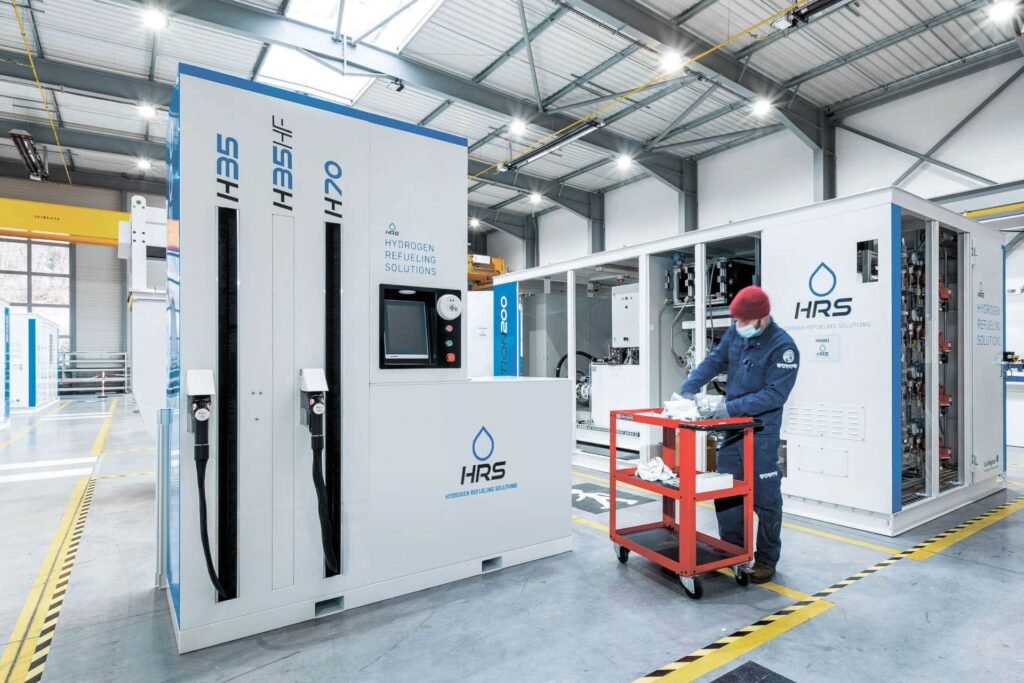The Association of European Automobile Manufacturers (ACEA) and the NGO Transport & Environment (T&E) are calling on the authorities to deploy several hundred hydrogen stations to support the development of fuel cell heavy goods vehicles.
European truck manufacturers are fully committed to achieving carbon neutrality in road freight transport by 2050 at the latest, says ACEA. Low-emission and especially zero-emission vehicles will play a crucial role in achieving this goal, their number and range will increase rapidly over the coming years.
However, as this position paper shows, the essential infrastructure to operate, load and refuel these trucks is almost completely lacking. The review of the Alternative Fuels Infrastructure Directive (AFID) represents a crucial opportunity to set specific and binding infrastructure targets at European and Member State level for low- and zero-emission heavy-duty vehicles.
In addition, a target of around 300 hydrogen refueling stations suitable for trucks by 2025 and at least 1,000 by 2030 at the latest should be set. In addition, a hydrogen refueling site should be available every 200 km on the TEN-T core network by 2030. A hydrogen refueling station for trucks should have a minimum daily capacity of at least six tonnes hydrogen, with at least two distributors per station.
On the ground!
On the ground, however, the sector is active, as these two examples show. Thus, the McPhy company, specialist in zero-carbon hydrogen production and distribution equipment (electrolyzers and recharging stations), announces that it has signed a strategic agreement with TSG, the leading European provider of installation and maintenance services for networks. energy distribution (traditional fuels, biofuels, natural gas, electricity, hydrogen, etc.) in Europe, with a view to entrusting it with the maintenance of part of its hydrogen stations and jointly responding to certain calls for tenders. The agreement signed with TSG will allow McPhy to offer premium quality 24/7 maintenance for its hydrogen stations, drawing on recognized expertise both in the distribution of renewable energies and in traditional fuel stations. This cooperation supports the offer of services for the transition to the industrial scale of McPhy station projects. Already materialized by 35 stations installed or in the process of being installed, this industrial scale-up will accelerate with the development of an increasingly extensive portfolio of project opportunities.
Another example, HRS, European designer and manufacturer of hydrogen refueling stations (see photo), announces that it has received the order for a hydrogen refueling station and the installation of the piping infrastructure connecting the electrolyser to the various industrial and mobility uses. This order is made as part of the HyGO Vannes project aimed at developing the use of green hydrogen in Morbihan, Brittany. The company HyGO (made up of the SEM of Morbihan Énergies and Engie Solutions) will, through this investment, supply green hydrogen to the Michelin site and the hydrogen refueling station in Vannes (56). The objective is to produce up to 300 kg/day of green hydrogen by electrolysis in order to supply a consumer green hydrogen distribution station for light and heavy vehicles. The station will be installed on the edge of the Michelin factory, ZI du Prat in Vannes, and will be used for industrial purposes by Michelin, which will use it on its site for its heat treatment process.

